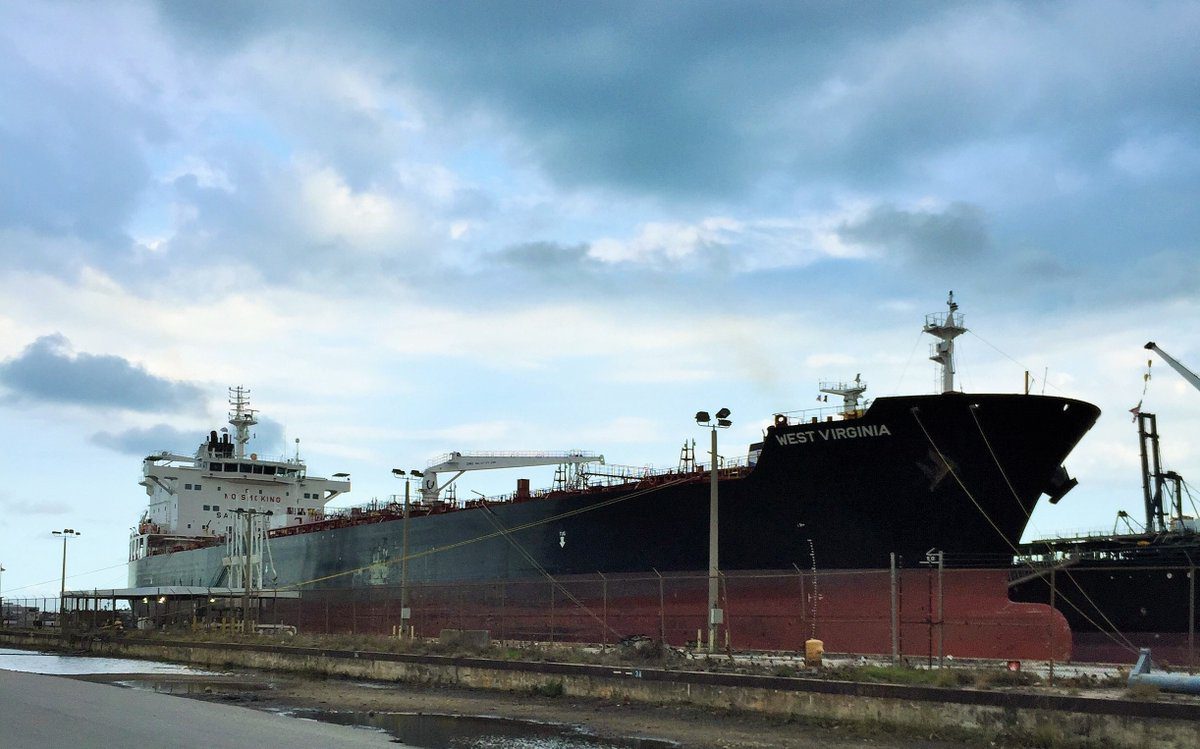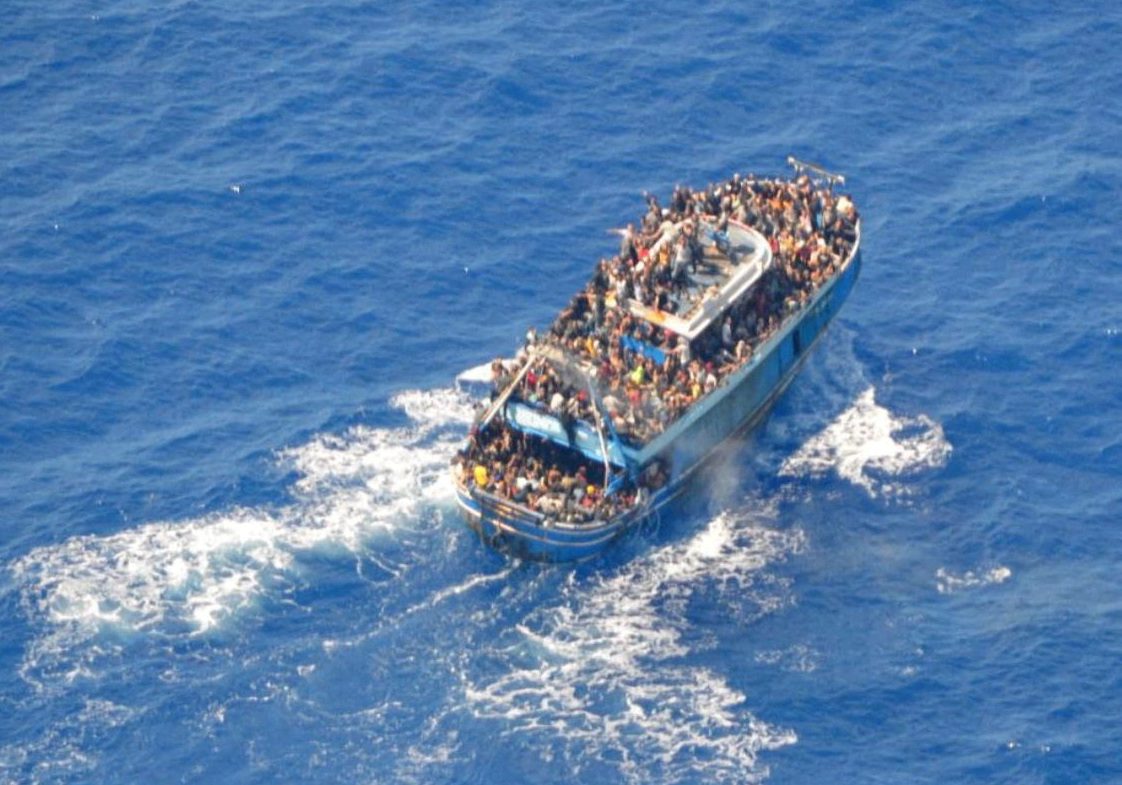By Salvatore R. Mercogliano, Ph.D. (gCaptain) The cyberattack upon the Colonial Pipeline on Friday, May 7, 2021 has resulted in the shutdown of a major conduit that provides 45 percent of the fuel for the eastern United States. It is 5,500 miles of pipeline stretching from Texas to New Jersey, servicing 14 states and 7 airports directly. It handles 100 million gallons of fuel daily. Its closure marks a serious attack on the domestic infrastructure of the United States and has exposed another critical shortfall within the nation, the lack of sufficient domestic tanker and coastal transportation resources to temporarily supplement the shutdown. While many see the United States as a massive sea power, with the largest Navy in the world, behind the façade, its commercial capabilities have waned from number one in the world after the Second World War, to 21st place in terms of size of merchant marines.
With the closure of the pipeline, the eastern part of the United States is reliant on the fuel stored in the distribution sites along the network. It is from these points, that tanker trucks and railways distribute the fuels to customers and stations within their driving distance – the pipeline follows an inland route from Houston, via Baton Rouge, Birmingham, Atlanta, and Charlotte. It is currently unclear how long the computer systems for the pipeline will be down, or what damage has been done to the control systems. This means that as the reserves in the depots are depleted, alternative routes of distribution must be established.
The Biden Administration has already increased the maximum driving time of truck drivers from 11 hours per day to 14. However, even the largest trucks only carry about 9,000 gallons of fuel. To transport the necessary fuel to eastern states, the nation will have to rely on tanker vessels to load refined products along the Gulf Coast and distribute it to East Coast ports. At issue is the available amount of tonnage and number of ships.
The United States coastal trade has been protected under cabotage laws since the nation’s inception. The latest iteration of these laws date to just after the First World War, when the largest merchant fleets in the world – those of Great Britain and Germany – suddenly became unavailable to America to transport its exports and imports. This situation is akin to what is currently happening in the ports of Los Angeles and Long Beach today, with American exports languishing in warehouses and in terminals while carriers prioritize the return of empty containers to speed up the cycling.
Fortunately, the United States had a large domestic fleet that was allocated to carry part of its international trade. After the war, the Merchant Marine Act of 1920 – referred to as the Jones Act – created the nation’s first maritime policy that covered many aspects of shipping, including affirming that only American-built, -owned, -crewed, and -flagged ships could transport cargo between American ports; which remains in force today.
That means, should tankers be necessary to supplement the pipeline, the nation can call on 57 Jones Act compliant tankers in the US fleet, of which 44 are on the Gulf and East coasts. These ships are largely used to transport distillate fuel to areas not serviced by the pipeline, such as Florida and New England. Or they transport crude oil to refineries in the mid-Atlantic. Currently, two of the major American oil carriers – Overseas Shipping Group (OSG) and Crowley Maritime – not only have ships in service, but they have several vessels that are off charter due to the recent slow down in the market. These ships can be recrewed and placed back in service. The 44 tankers average about 45,000 deadweight tons, which is equal to 8 million gallons of gasoline. With a daily capacity of 100 million gallons, it would take large numbers of vessels to be able to meet this requirement. A long-term commitment would eventually exceed the number of American-flagged tankers and articulate tugs and barges (ATBs) in the US inventory.
What are the alternatives to alleviate this situation?
The obvious solution would be to restore the pipeline. Without that, an assessment from the Colonial Pipeline on the expected number of days that service will be interrupted is essential before formulating a coherent maritime strategy. If the shutdown will be more than a few days and it will deplete the reserves in storage sites along the pipeline, then several courses are available.
First, as mentioned earlier, all the available American-flagged tankers and ATBs of U.S. carriers – OSG, Crowley, Seabulk, Chevron, Alaska Tankers, and ConocoPhillips Polar – should be provided the first options to fix contracts to transport fuel. Should American carriers be unable to provide the necessary tonnage and carrying capacity, then limited waivers should be granted for foreign-flagged tankers to participate in the trade on a case-by-case, single voyage basis.
Ideally, the entry of such vessels into the American cabotage trade should require the ships to be reflagged, and bareboat chartered to US firms so that they could manage them and replace their crews with American mariners. However, the timeframe of the closure may preclude this from happening, but if the shutdown is long-term, then this should be a consideration.
The Biden Administration may also have to make some difficult choices about limiting fuel consumption in the impacted states. Even with the arrival of sufficient fuel in east coast ports, it needs to be transported into the interior of the states, much longer distances than usual. Plus, there is insufficient storage spaces for fuel in many of these ports. The US may have to use some of its tankers as floating storage to supplement tanks ashore.
Finally, this issue should highlight the absolute vulnerability of the nation in both its internal infrastructure and maritime limitations. The reason for the Jones Act was to ensure that the US has not merely ships with American crews, but shipyards and repair facilities to maintain these vessels. Today, China, Republic of Korea, and Japan account for over 90 percent of commercial ship construction, and the Chinese merchant marine is second in the world, with a Navy in a similar position. Subsidies and protections are afforded to shipbuilders and operating companies, while such measures have been repealed from American firms.
If the issue is merely the transportation of goods, then the United States can rely on foreign shipping and companies to move its oceanic and coastal cargo. But since the US is a world power, with commitments globally, it needs not just military forces, but commercial elements to support it. Constant reform of all American maritime laws is needed, not repeal. This is a moment when American shipping companies, the Maritime Administration, and advocates for the US maritime sector should be conveying the true context of this situation and how dangerous the nation’s position is today. Had this occurred last summer when few tankers were available for charter, this could have been costly. What if an adversary conducted this operation to coincide with military operations and made the chartering of non-US ships impossible?
The question to waive or not to waive the Jones Act constantly re-appears during times of emergency. The attack on the pipeline by an alleged Russian criminal organization exposes the danger of the country to not only outside forces but exposes the vulnerabilities of our infrastructure. We need to do what is right for Americans to ensure that fuel does not become a scarce commodity. At the same time, we must take note of the issues facing our maritime infrastructure and how we currently lack the domestic ability to support a merchant marine that was essential to our success in the two largest wars of the twentieth century, during the Cold War, and in a multitude of other conflicts.
Unlock Exclusive Insights Today!
Join the gCaptain Club for curated content, insider opinions, and vibrant community discussions.

 Join The Club
Join The Club













